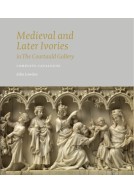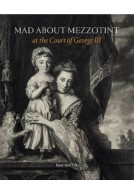Collecting for the Public (Hardback)
Works That Made a Difference
(click here for international delivery rates)
Order within the next 2 hours, 48 minutes to get your order processed the next working day!
Need a currency converter? Check XE.com for live rates
There was a time when museums might have been regarded as rather forbidding and austere centres of learning, but today they are more likely to position themselves firmly within the tourism and leisure industry with all manner of food, fun and family
entertainment on offer. A high-profile museum brand often relies on a fast-changing menu of temporary exhibitions with an attractive programme of activities, cleverly marketed to ever-growing numbers of visitors. Many of these changes have been positive and beneficial but they have not been without risk to the central purpose of museums as repositories for collections that are looked after, researched and
displayed with knowledge and sensitivity. The permanent collection should be the heart and soul of any museum. Nurtured and developed with intelligence, a collection can be an endless source of surprise and delight as well as a focus of local and national pride. The museum in this view is a setting for sustained encounters with objects and works of art, somewhere to be visited and revisited over the course
of a lifetime, a place that helps to bind communities, with collections that are cared for and shared as a reminder of the past and a source of inspiration for the present. The process of acquiring works for public collections is rarely easy in any setting. In the face of escalating prices on the art market and diminishing public funds it is all too easy for complacency and apathy to settle upon the museum community. But the task of building collections of national or local importance is never finished. It should not be about casual ‘shopping’ or satisfying the whims of museum directors or sponsors. It is about building a heritage that is richer, more complete and more relevant for future generations; with every successful acquisition, a museum’s collection gains in strength and character. The volume is dedicated to Peter Hecht, the great champion of public art collections, who throughout his career has worked to show us why museums matter and how their collections, large or small, national or local, can make a profound difference to the lives of those who use them. We hope that it will bring people the world over to realise the importance of collecting for the public, locally, nationally and internationally, and to acknowledge and encourage the role of private individuals, associations and institutions, as well as public bodies, in this vital endeavour.














